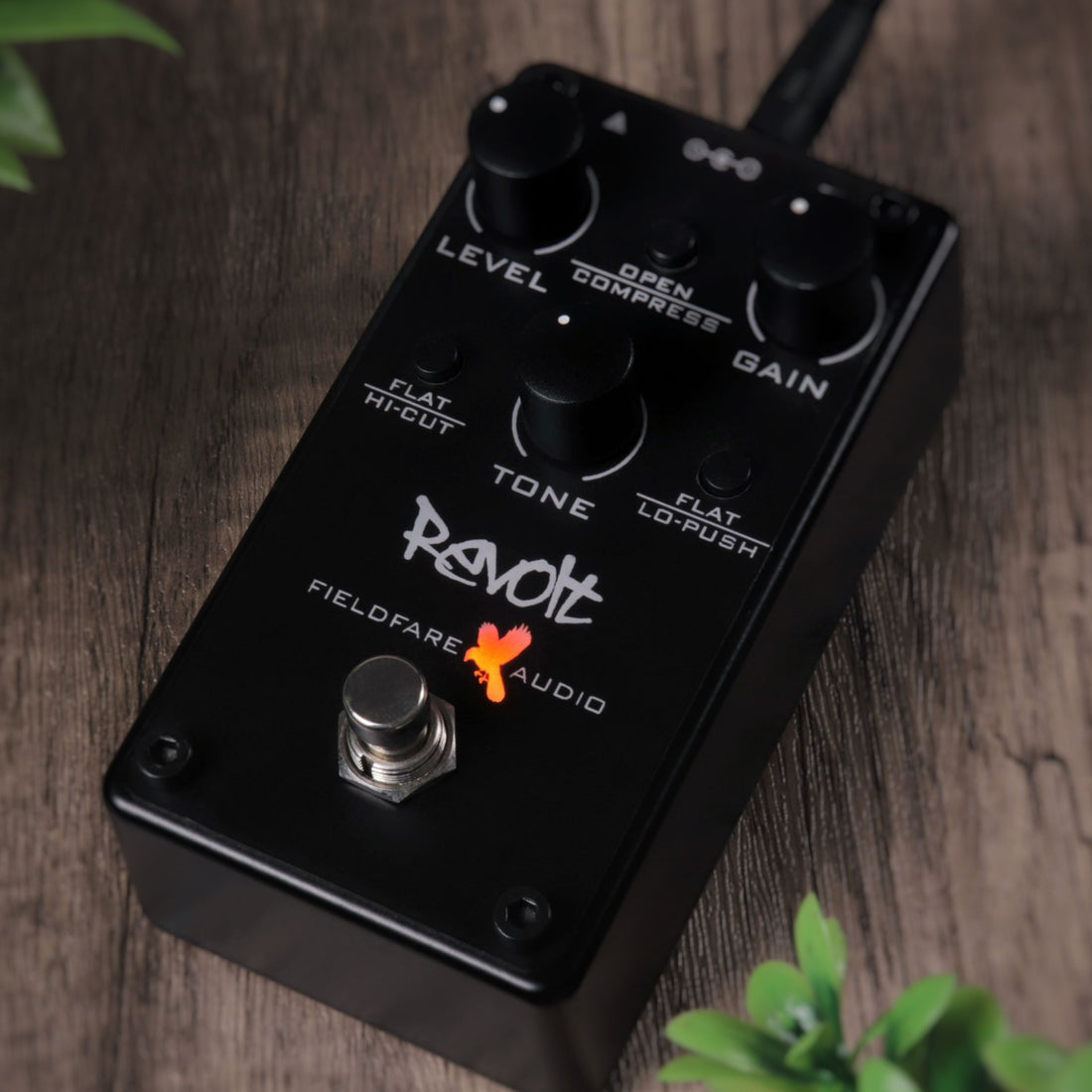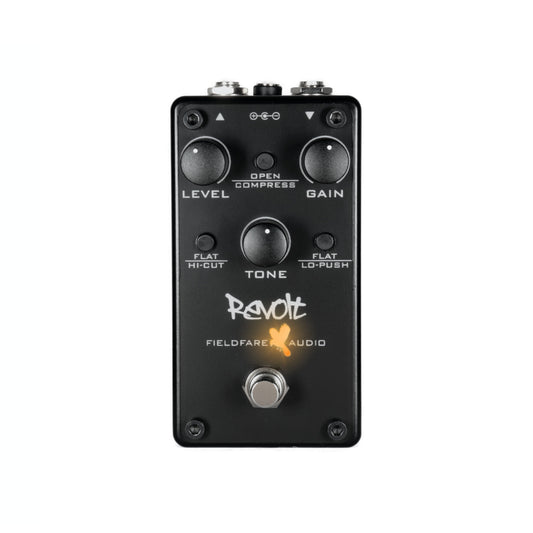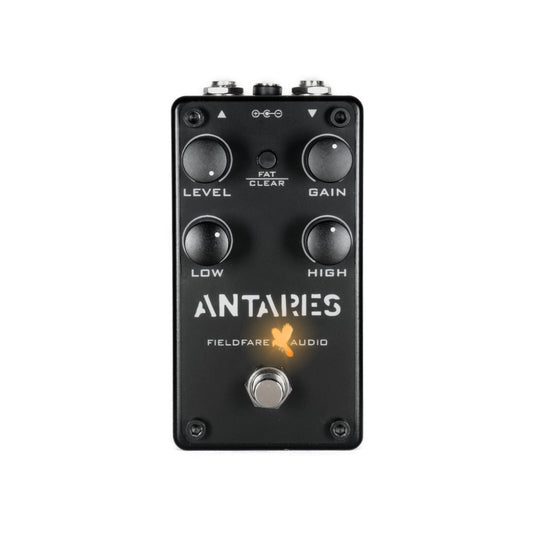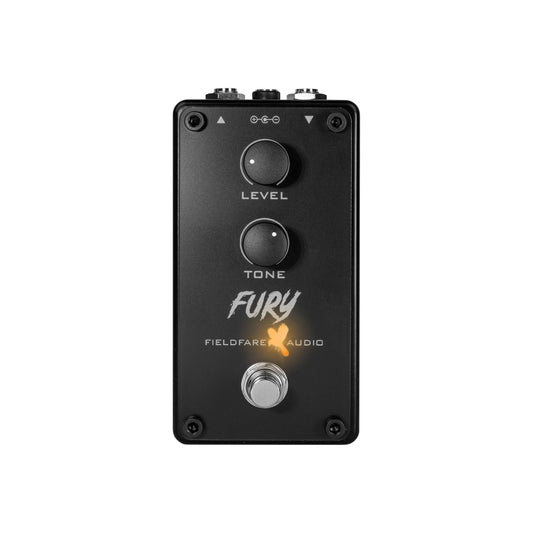
How does a Tube Screamer work?
Share
The Tube Screamer is probably one of the most famous overdrive pedals ever. Since the 1970s, it has captivated guitarists with its unmistakable sound: a warm, creamy overdrive, particularly notable for its characteristic mid-range boost—the so-called "mid-hump." But what's the technical side of this iconic pedal? How does it work exactly? And what makes it sound so special? We'll explain that now.
What is overdrive anyway?
Before we dive into the technical details, let's briefly define it: Overdrive is a type of distortion in which the guitar signal is amplified so much that it begins to clip. This happens, for example, when a tube amplifier reaches its limits and "pushes" the signal. In contrast to the harsher distortion or harsh fuzz, overdrive usually sounds warmer, rounder, and more musical—exactly what many guitarists love.
The Tube Screamer circuit – the technical basis
At the heart of the Tube Screamer is an operational amplifier (op-amp), typically a JRC4558. This small chip amplifies the guitar signal and simultaneously shapes the sound. Clipping diodes are located directly in the signal path, intentionally "overdriving" the signal. This creates what's known as soft clipping distortion—this means the signal is gently rounded off, sounding pleasantly warm and organic, rather than harsh and harsh.
This makes the Tube Screamer different from many other distortion pedals, which often produce harder, more aggressive distortion.
The famous “mid-hump” – why the mids are so important
Another distinctive feature of the Tube Screamer is its mid-range boost, often referred to as "mid-hump." This is achieved through a passive filter that boosts the mid-range frequencies while slightly attenuating the highs and lows. This mid-range boost ensures that your guitar sound stands out in the mix and doesn't "sink under" other instruments. This is extremely valuable, especially for solos.
Power supply and headroom
The Tube Screamer is usually powered by 9 volts, which is standard for most effects pedals. However, the operating voltage affects the so-called headroom – the range in which the signal remains undistorted before the pedal begins to "clip." A higher voltage, such as 18 volts, offers more headroom and thus a clearer clean boost before distortion sets in.
Many modern pedals or modified Tube Screamers use this trick to achieve more flexibility in the sound.
The controls: Drive, Tone and Level
The Tube Screamer has a clear design – with three simple controls:
* Drive: This adjusts the amount of signal clipping. More drive results in more distortion and sustain, while less drive produces a cleaner, more transparent sound.
* Tone: This control lets you adjust the tone by affecting the highs and mids. Turning it toward "bright" gives the sound more brilliance, while turning it toward "dark" makes it warmer and more rounded.
* Level: The output level that the pedal supplies to the amplifier or the next pedal in the signal path.
The interaction of these controls makes the Tube Screamer so versatile – from gentle blues overdrive to rocking crunch.
Why does theTube Screamer sound so special?
It's the combination of the technical components and the clever circuitry that shapes the sound: The op-amp provides the amplification, the diodes create a soft, musical distortion, and the mid-hump boosts the mids so your guitar signal is truly present within the band. The pedal also responds very dynamically to your playing – if you play more gently, it sounds cleaner, while if you play harder, it becomes more distorted.
The Tube Screamer also works great as a clean boost – you can use it to boost your amp or other overdrives without changing the basic sound too much.
Conclusion
The Tube Screamer is a technical masterpiece of simplicity and effectiveness. With relatively few components, it manages to create a sound that has set standards for decades and is at home in countless musical styles. Whether as a gentle boost, dynamic overdrive, or classic crunch, the pedal remains an indispensable classic.
If you're interested in overdrive pedals, the Tube Screamer is a perfect starting point. And who knows—you might discover exciting alternatives and clones based on the same principle but offering their own unique features.




